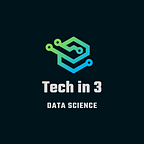AI in Drug discovery
Artificial intelligence (AI) uses personified knowledge and learns from the solutions it produces to address not only specific but also complex problems.
At present, the pharmaceutical industry is facing challenges in sustaining its drug development programs because of increased R&D costs and reduced efficiency.
Application of AI in Drug Development:
The tasks of finding successful new drugs are daunting and predominantly the most difficult part of drug development. This is caused by the vast size of what is known as chemical space, which is estimated to be in the order of 10⁶⁰ molecules.
The technologies that incorporate AI have become versatile tools that can be applied everywhere in various stages of drug development, such as identification and validation of drug targets, designing of new drugs, drug repurposing, improving the R&D efficiency, aggregating and analyzing biomedicine information, and refining the decision-making process to recruit patients for clinical trials.
These potential uses of AI provide the opportunity to counter the inefficiencies and uncertainties that arise in the classical drug development methods while minimizing bias and human intervention in the process.
The other uses of AI in drug development include the prediction of feasible synthetic routes for drug-like molecules, pharmacological properties, protein characteristics as well as efficacy, drug combination and drug–target association, and drug repurposing.
DL has demonstrated outstanding success in proposing potent drug candidates and accurately predicting their properties and possible toxicity risks. Overcoming past problems in drug development — such as analysis of large datasets, laborious screening of compounds while minimizing standard error, requiring large amounts of R&D cost and time of over US $2.5 billion
With AI technology, new studies can be carried out in assisting the identification of new drug targets, rational drug designing, and drug repurposing.
Let’s understand how to utilize AI in drug development in detail.
The first step in drug development is the identification of novel chemical compounds with biological activity. This biological activity can arise from the interaction of the compound with a specific enzyme or with an entire organism. The first compound that shows activity against a given biological target is called a ‘hit’. Hits are often found during the screening of chemical libraries, computer simulation, or screening of naturally isolated materials, such as plants, bacteria, and fungi.
A lead is a chemical compound that shows the promising potential that can lead to the development of a new drug as a treatment for a disease. Identified hits are screened in cell-based assays predictive of the disease state and in animal models of disease to characterize the efficacy of the compound and its probable safety profile. Once a lead compound has been found, its chemical structure is used as a starting point for chemical modifications with the objective of discovering compounds with maximal therapeutic benefit and minimal potential for harm.
During the process of lead generation, hit molecules are systematically modified to improve their activity and selectivity towards specific biological targets while reducing toxicity and unwanted effects. The chemically related compounds derived from a hit are called analogs and the process is referred to as hit expansion.
Medicinal chemists undertake hit expansion using well-established organic chemistry techniques. To increase the synthetic throughput, chemists focus on a specific reaction or set of reactions to assemble building blocks together to make a series of analogs quickly. A ‘building block’ is a compound that possesses a reactive functional group and atoms that interact with the active site of a biological target.
This active site is a specific region in the biological target to which the compound (or substrate) binds through interaction forces. The binding of a substrate to an active site can be visualized as ‘lock and key’ or ‘induced-fit’ models.
